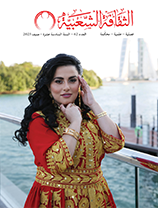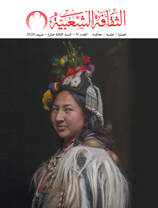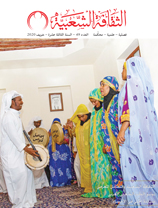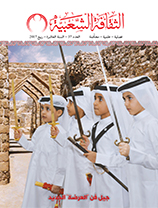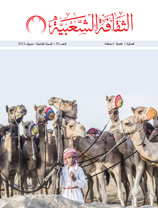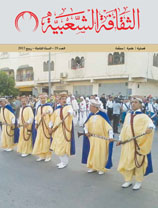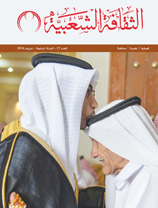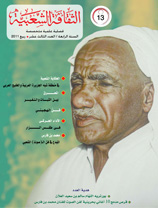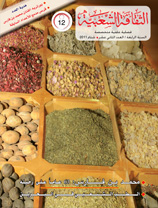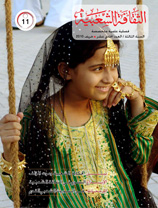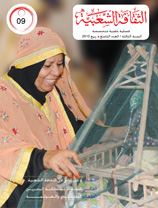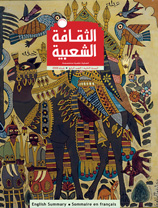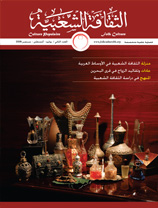Adil Maqdish's Folk Art: An Artistic Approach to Tunisian and Arabic Folk Tales and Legends
Issue 47
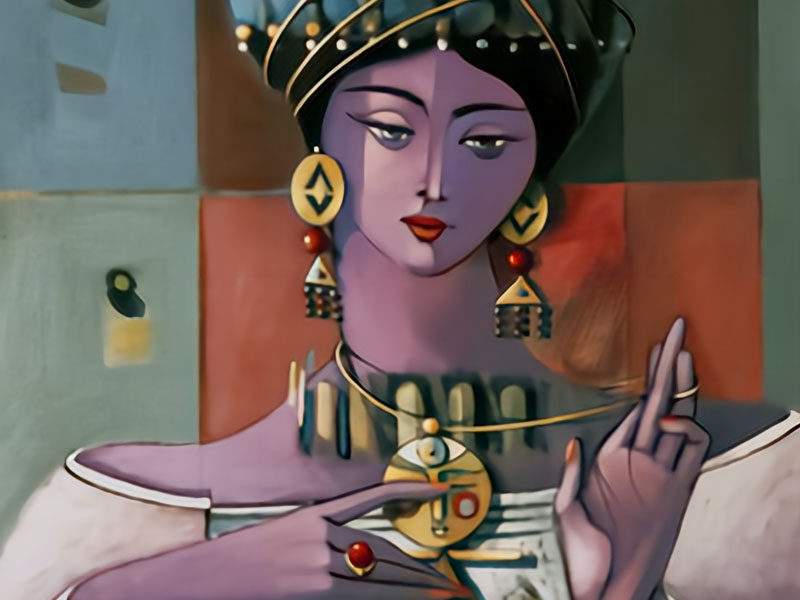
Monthir Mutaibi’ - Tunisia
The name of the artist Adil Maqdish is associated with folkloric art in its various manifestations. This art focused on women to communicate several feelings, thoughts and symbols within the space of drawings. It makes for very rich and comprehensive images.
The artist’s work, which represents aspects of Arab-Islamic heritage, is rich in folk ornamentation and Islamic adornment. This richness has been observed by some Western researchers interested in Islamic arts. French scholar Alexandre Papadopoulo considers “fear of emptiness” as the core impetus behind Islamic art (and its heavy use of ornamentation). In our opinion, this extends to behavioral and communicative aspects of the Arab-Islamic culture.
Most of Adil Maqdish's works are so decorative with a creative selection of colours and shapes. His interest in the Sirat Bani Hilal (al-Hilali epic), Phoenician mythology, and Tunisian and Arabic mythology is part of a series in which he presented Tunisian and Arab folklore, in general, and portrays his passion for surreal art.
He was aware of the fine thread that connects the folk heritage of Tunisia and the Arab world, in general, to the world of fantasy and dream. His obsession with portraying the events of ancient legends enabled him to convey his thoughts and feelings, and we find those legends and myths consistent with his ideas and attitudes towards historical events that are part of Tunisia’s ancient history.
The artist describes his relationship with his art: "I have a painful memory of the Romans, the Turks, the Spaniards, and the tribes of Bani Hilal armies... I painted the Dido's fertility on the skins of the sacred cows. I engraved the face of Jughatra in the markets of the barbaric horses. I engraved on the walls of the African temples the drawings of the shore ships and their sails which are woven from women’s hair”.
The artist expressed these views in different ways, and in distinctive styles. His unique artistic style differs from his predecessors of folk artists and world classical and contemporary artists. He takes his audience to distant worlds and close times without losing the joy of aesthetic artistic elements, within a space that is sensitive, well organized and overflowing with imagination.
Monthir Mutaibi’: Tunisian, born on 04/12/1968
Associate Professor of Plastic Arts in the Tunisian Universities and University of Hail, Saudi Arabia.
Won the Sharjah Award for Plastic Art's Critical Research twice
Has published three books on criticism of modern Arabic plastic arts
Supervised a series of doctoral and master's dissertations
Held several solo and group exhibitions
Participated in many scientific seminars





